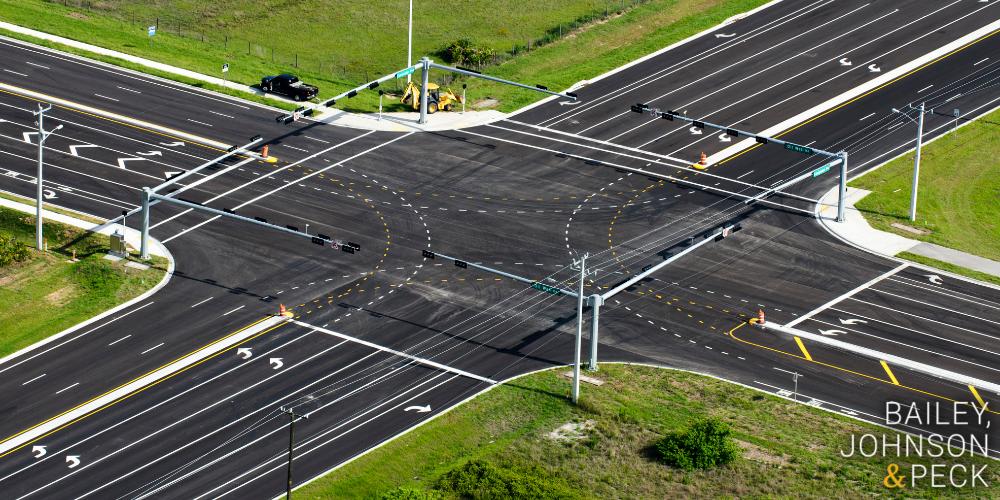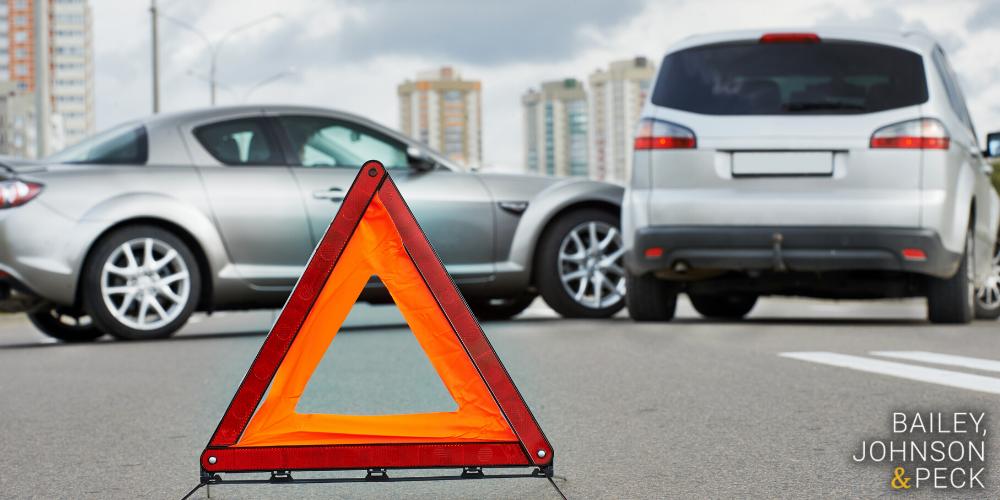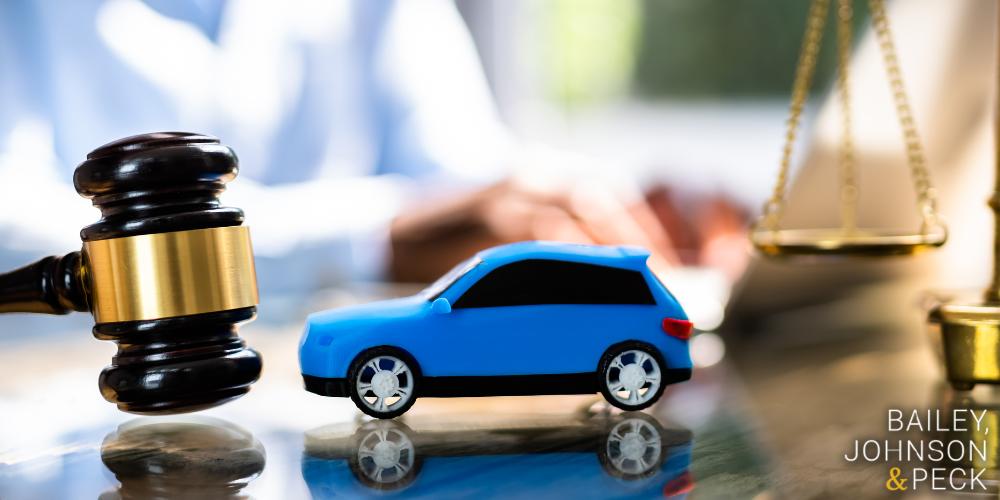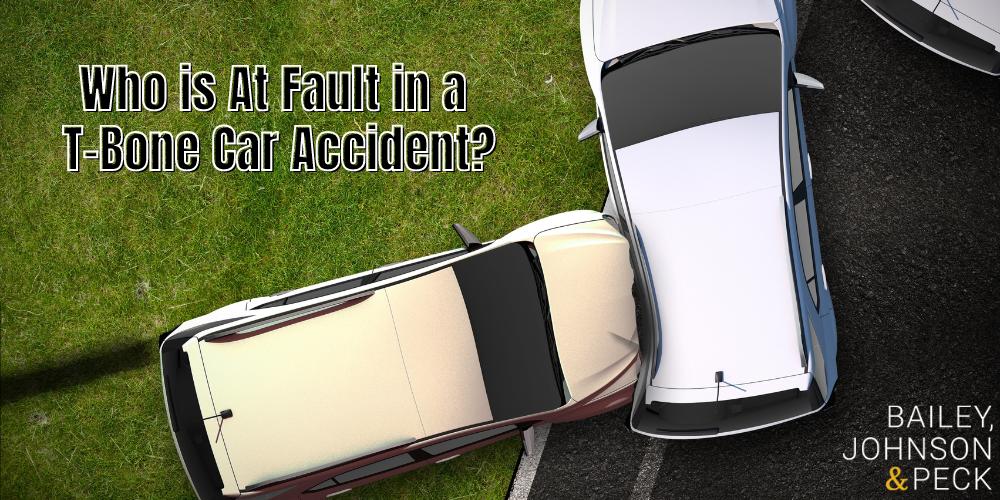Determining fault in motor vehicle accidents is often complicated, no matter what type of accident occurred and how many drivers were involved. But proving fault in t-bone car accidents can be the most challenging for both police officers and insurance companies. There is so much evidence to sort through at the accident scene before coming to any sort of conclusion. Below, our Albany car accident lawyers break down all the complexities about proving fault in a t-bone crash.
Car accidents of any type can lead to severe injuries, such as brain injuries and spinal cord damage, as well as wrongful death. If you are the victim in this situation, you deserve to recover compensation from the at-fault driver for medical bills, lost wages, property damage, and more. The legal team at Bailey, Johnson & Peck can help you do that. Call an Albany personal injury lawyer or Albany wrongful death attorney at 518-456-0082 to schedule a free consultation today.
What is a T-Bone Car Accident?
A T-bone car accident is a side impact collision in which the front of one car hits the side of another car, forming the shape of a “T.” T-bone collisions are usually the fault of one driver. However, it can be very difficult to determine fault depending on specific circumstances.
T-bone car accidents can result in catastrophic injuries and even death. In fact, t-bone collisions accounted for 25% of all vehicle occupant deaths in 2021, according to data from the Insurance Information Institute.
If you’ve sustained catastrophic injuries as a result of a person’s deviation from the reasonable person standard, contact an Albany catastrophic injury attorney.
Common Causes of T-Bone Car Accidents
T-bone accidents happen when people engage in any reckless or dangerous behaviors, such as speeding, texting and driving, drunk driving, or road rage behaviors. However, most t-bone accidents occur at intersections, during left turns, or while backing out of a parking spot.

Four Way Intersection
Not paying attention to traffic lights or stop signs at intersections (or not knowing stop sign rules) easily cause most t-bone collisions. For example, maybe one driver is late to work and decides to risk running a red light. In the process, they hit another car during their green light. The result is a t-bone crash.
Or maybe two cars stop at a stop sign, and one of them doesn’t remember basic stop sign rules. The car that doesn’t have the right of way decides to move forward at the same time as the other car that does have the right of way. The result: a t-bone collision.
Left Turn Across Oncoming Traffic
Turning left across oncoming traffic is another common cause of t-bone car accidents. Here is an example: Driver 1 gets a green arrow on their traffic light, meaning they have the right of way to turn left. While they’re turning left, Driver 2 decides to run their red light and enter the intersection. Driver 2 then causes a t-bone collision with Driver 1.
Backing Out of a Parking Spot
Backing out of busy parking lots can be incredibly dangerous, especially if your vision is obstructed and people are driving too fast, not paying attention, or both. Situations like this can easily result in a t-bone car accident.
Why Are T-Bone Accidents So Dangerous?
Side impact collisions are incredibly dangerous, especially compared to other types of collisions such as front or rear end collisions. During front or rear end collisions, the driver is protected by several feet of metal, engine, trunk, and/or seats. All of these parts absorb the majority of the crash force so that the passengers hopefully don’t suffer as much harm.
Meanwhile, during t-bone car accidents, the driver and/or passengers are only protected by one layer: the car door, wall, or window. This layer is incredibly thin and does very little to absorb the force of the crash before the person is affected. The main factors that affect t-bone collision severity are the speed and size of the oncoming vehicle and the location of the impact relative to where a passenger is sitting. So if a large truck t-bones a car at a high speed right at the passenger door, the passenger has a high chance of suffering severe injuries and/or death from the force of the accident.
T-bone accident injuries are often much more severe than other types of accident injuries and can include:
- Traumatic brain injury
- Skull and facial fractures
- Eye damage and/or vision loss
- Neck injuries such as whiplash
- Spinal cord injuries
- Partial or complete paralysis
- Broken bones, such as shoulder or arm fractures, rib fractures, and/or vertebral fractures
- Seat belt syndrome
- Organ damage
- Severe bruising and/or lacerations
- Crush injuries such as compartment syndrome
- Amputations
- Wrongful death

Who is At Fault in a T-Bone Car Accident?
Most of the time, the driver whose front end collided into the side of another car is considered at fault in a t-bone accident. This driver is usually the one who violated a traffic rule (i.e. running a red light at an intersection) or engaged in some other reckless driving behavior and collided into someone who was following the rules.
T-bone accidents are often more complicated than other types of accidents, so determining fault can also be very complicated. In some cases, the driver who made the impact is not at fault because the struck vehicle was in the wrong place at the wrong time. If a car was sitting in the middle of an intersection for whatever reason when they shouldn’t be, and someone hit them while they had a green light, police and insurance may blame the driver in the middle of the intersection. It’s also possible for all vehicles involved to share a portion of the total blame, which will affect how much compensation they will recover from insurance or a personal injury claim.
At the end of the day, both police officers and insurance companies will draw a conclusion about who’s at fault by investigating evidence and the drivers at the accident scene.
What To Do After a T-Bone Car Accident
There are certain steps everyone should follow after a car crash, regardless of if they’re at fault. Following these steps will provide the best possible legal and financial protection in the days after the accident.
Here is to do after a car crash:
- Seek medical attention by calling 911, even if you believe you’re not injured.
- If the other driver is injured or if you believe there’s more than $1,000 in property damage, call the police as well.
- Exchange names, contact information, and insurance company information with all drivers involved in the accident.
- Ask for names and contact information of any witnesses at the scene.
- If you’re not injured, survey the accident scene and take plenty of pictures and videos of car damage, skid marks, nearby traffic signs, crash debris, and relevant stationary objects like poles or curbs.
What Not To Do After a T-Bone Car Accident
Here is what you should not do after any type of car crash:
- Leave the accident scene before speaking with the other driver and exchanging information. If you do this, you could be charged with a hit-and-run. You should stay on the scene until the police give you the okay to leave.
- Interfere with police investigation of the accident scene or with first responders.
- Profusely apologize and say anything that could incriminate you later, such as, “I’m so sorry, I just left a party, and I had a drink, but I figured I was totally fine to drive!” You may have had a drink and not have been intoxicated at all. But now, police are going to investigate you further and maybe even give you a DUI charge. Additionally, apologizing over and over again can make you seem like you’re the at-fault driver, even if you’re actually not.
- Answer any questions about possible criminal charges without a lawyer present. You could say the wrong thing without trying to, which could make your situation much worse.
Gathering Evidence After Leaving the Accident Scene
You should continue gathering evidence for your t-bone accident case even after you have left the scene. Listed below is all the evidence we recommend presenting to your insurance company and/or legal team:
- The official police report and diagram of the accident scene.
- Accident photos and videos of any injuries sustained during the accident.
- Dash cam footage or surveillance camera footage of the accident.
- Witness statements.
- Your medical bills and records.
- Any journal entries about the accident, your injuries, your mental or emotional state after the accident, your medical treatment, and your healing process.
Can You Sue for a T-Bone Accident in New York?
Yes, you can sue the at-fault driver for a t-bone accident if it can be proven that their negligence directly caused your injuries, property damage, and/or financial loss. Filing a personal injury claim is only necessary if your insurance company (or the other driver’s insurance company) cannot fully compensate you for the damages you suffered. If you suffered minor injuries and less than $1,000 of property damage from the t-bone crash, you should be able to recover enough compensation from insurance alone.
For more information, visit: Is NY a no-fault state?
Because t-bone accidents are very dangerous compared to other types of accidents, the incidence of death is high. If you or a loved one suffered death during a t-bone accident, you may have grounds to bring a wrongful death claim against the at fault driver.
We provide more information here: wrongful death vs survival action
An Albany personal injury attorney at Bailey, Johnson & Peck can analyze the details of your situation and help you determine if you have grounds to sue the other driver in any capacity. Above all else, we’ll protect your legal rights and make sure you receive the compensation you deserve.
Car Accident Damages
An Albany car accident lawyer at our law firm can help you recover compensation for the following types of damages after your crash:
- All medical bills
- All physical therapy bills
- Expenses for necessary medical equipment such as wheelchairs, braces, assistive equipment, etc.
- Caretaking expenses
- Lost wages
- Loss of earning capacity if your injuries prevent you from completing your normal job duties
- Permanent scarring, disfigurement, and/or disability
- Loss of enjoyment of life
- Loss of consortium
- Funeral and burial expenses if the t-bone collision resulted in wrongful death

Call Albany Car Accident Lawyers at Bailey, Johnson & Peck Today
If you or a loved one has suffered serious injuries or wrongful death in a car accident caused by a driver’s negligence, you may have grounds to take legal action. At Bailey, Johnson & Peck, we have decades of combined experience in handling all sorts of personal injury lawsuits, including car accident cases. An experienced car accident attorney at our law firm will protect your legal rights and make sure you recover the financial compensation you deserve for your suffering. Call 518-456-0082 to schedule a free consultation at our Albany law firm today.




